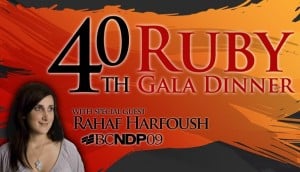Last week I attended the Collaborative Innovation Summit in Providence, RI. Called BIF-6 in reference to it’s organizer, the Business Innovation Factory and it’s sixth occurrence, the two-day event exposes participants to thirty exceptional storytellers in a intimate theater setting. I had attended last year’s BIF-5 and found it inspiring and energizing, so I went for more.
An even greater value in attending BIF-6 is really in the networking that takes place before, after and between the stories. BIF founder Saul Kaplan calls it “random collisions of unusual suspects” because he and his team use diversity and diversification as a core principle to enrich these collisions. Storytellers as well as participants are from every walk of life imaginable: from serial entrepreneurs, to educators, technologists, business executives, high-school students to a twelve-year old girl that set up a domestic grease collection and reprocessing into bio fuel that helped heat the house of needy families in her town.
Daring to be Great
The last presentation of Day 2 of BIF-6 was by Keith Yamashita, titled originally “Change, to the Power of Ten”. Inspired and moved by previous storytellers and encounters with participants, he changed his title to “Is it worth daring to be great?” As he was reflecting on the role of trust between two people in the larger context of teams and organizations, he recounted an incident, when a business partner and mentor (Alan Webber) vested his full trust in him. For 10 seconds he became very emotional and a tear ran down his cheek. He quickly recovered and continued his presentation, but in those 10 seconds I learned about trust and its importance in personal relations and in social networks small and large more than any books or courses could teach.
Random Collision
Later the next day, in the coach taking us to Providence Airport I happened to sit next to another participant, Monika Hardy (@monk51295). With a long wait for our flights, we settled in one of the airport’s seating areas, opened our laptops, intended to get some work done. But the conversation started in the coach did not want to go away. I was still reflecting on my learning experience from Keith’s presentation, and found myself in an amazing deep-dive conversation with Monika, who turned out to be an innovator herself in the field of children education. I was fascinated and encouraged that in a public school system, a space has been allowed to experiment with new methods and ways. Monika described how children choose what they want to learn and are then guided by a different kind of teacher, a facilitator of learning that connects the dots of the child’s interests without imposing an unnatural regiment of learning. In fact, the children go through a “detox” to unlearn some of the old behaviors learned in school.
Emotional Learning
As I was listening to her passionately describe her work , it occurred to me that the “detox” approach might well be applicable to business. We need to unlearn behaviors drilled into us by the existing system, before we can innovate new ways and structures to do business. I am planning on following up on this conversation.
So, what else did I learn? We seem to be wired for absorbing a significantly higher volume of knowledge, when we are emotionally engaged. Traditional learning, however, focuses primarily on information supply, without much of an emotional component. The result is that we learn the information without the full context that gives the information so much richer meanings in multiple dimensions. We do the same in business. As Keith said: “The biggest fallacy of business is that it’s only rational. All business is personal and all business is human”. That’s why one random encounter with an unusual suspect can teach you more than volumes of HBR.
So as I am soaking up all the learning from these two random BIF-6 collisions, the question swirling in my head is: Could we design emotional components to our learning processes at every level? That’s a very intriguing idea particularly as we witness the emergence of a new system of learning based on modules of knowledge that learners can pick and choose from. Imagine if each of these modules was designed to enlist an emotional component of learning.
I’ll be trying to write about the many other encounters that sparked my brain at BIF-6, so stay tuned!
This entry was posted on Tuesday, September 21st, 2010 at 1:09 pm and is filed under The Nabou Chronicles. You can follow any responses to this entry through the RSS 2.0 feed. You can skip to the end and leave a response. Pinging is currently not allowed.
nice capture.
i keep reliving our conversation with my students and others.. so much packed in. important stuff.

